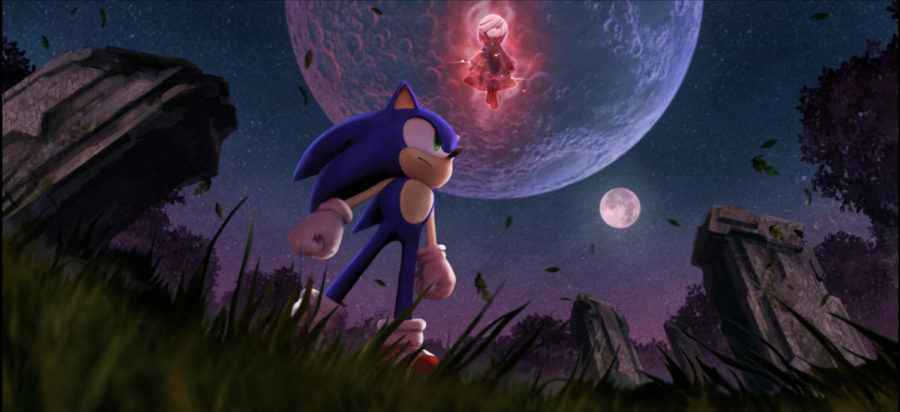Sonic Frontiers makes the blue blur cool again
After 11 years, it overjoys me to say that Sonic The Hedgehog has finally had another good 3D title. No, not just a good game, but a phenomenal experience. Released on Nov. 8, “Sonic Frontiers” is a love letter to fans across all the 3D titles, whether it be the “Sonic Adventure” duology, the “Storybook” duology, or the titles featuring the boost mechanic such as “Sonic Unleashed.” While not perfect, “Sonic Frontiers” reminds gamers just how cool the blue blur is when firing on all cylinders.
First and foremost, is the gameplay fun? To that, I give a resounding yes. “Sonic Frontiers” is the fifth game to use the boost formula established in “Sonic Unleashed” in 2008, featuring moves such as the boost, the quick step and the stomp. However, “Sonic Frontiers” improved the formula by putting Sonic on the Starfall Islands — five different islands with open-world exploration. Combat has also been greatly emphasized, while in previous games, enemies were usually taken out instantly with the boost or homing attacks. Most enemies in “Sonic Frontiers” have health bars, much like 2003’s “Sonic Heroes.” Throughout the game, Sonic will gain skill points which can be put toward unlocking new attacks and techniques in a skill tree. While the combat is fairly simplistic, it still feels satisfying to use all of Sonic’s moves to take out enemies as fast as possible.
Cyberspace is also a significant part of the game, which are unlockable linear levels similar to those seen in the previous four boost games. These Cyberspace levels feature familiar locations such as Green Hill, Chemical Plant and Sky Sanctuary, as well as a city theme that seems to be a fusion of the numerous cities Sonic has run through in his games. These stages tend to copy level designs from previous games as well, such as the Windmill Isle in “Sonic Unleashed” or the Sky Rail and City Escape in “Sonic Adventure 2.” While admittedly uninventive, it was satisfying to recognize setpieces from previous games. Cyberspace sounds like fun in theory, but it doesn’t hold a candle to the open zones. Unfortunately, while the open zones have customizable controls, Cyberspace has its own uncustomizable physics and controls, which are noticeably worse than the open zones by default. Thankfully, Cyberspace is fairly short, and can be ignored through other means of unlocking the keys that it gives you, such as the fishing minigame with Big The Cat.
Unlike the past 13 years of Sonic games, “Sonic Frontiers” offers a compelling story with numerous references and callbacks to previous games. Being written by the fan favorite IDW comics writer Ian Flynn, “Sonic Frontiers’” story follows in the footsteps of the “Sonic Adventure” duology and the fan dubbed “Dark Age” games in its more serious, involved approach to storytelling. While the references can be heavy handed and get lost upon new fans, for old fans such as myself, it’s a treat to finally see the series recognize its continuity. While “Sonic Colors” from 2010 was a great game, it undoubtedly began a trend for the series to have minimal plot and bad humor out of fear of scrutiny caused by the failure of “Sonic The Hedgehog” in 2006. “Sonic Frontiers” finally shows that the Sega and Sonic Team are able to face their fears and once again write a story worth remembering.
“Sonic Frontiers” isn’t perfect, but it’s a beautiful love letter to fans who have stuck with the series through thick and thin. It’s experimental, but just because the game is different doesn’t make it bad. If anything, “Sonic Frontiers” brings the series back to its former glory and is well worth the time and money. The game is a phenomenal experience, and reminds the gaming landscape why the blue hedgehog remains an icon to this day.

Senior Alexander Cha is a reporter and this is his third year on staff. His favorite subject is English and his hobbies include writing stories and playing...













